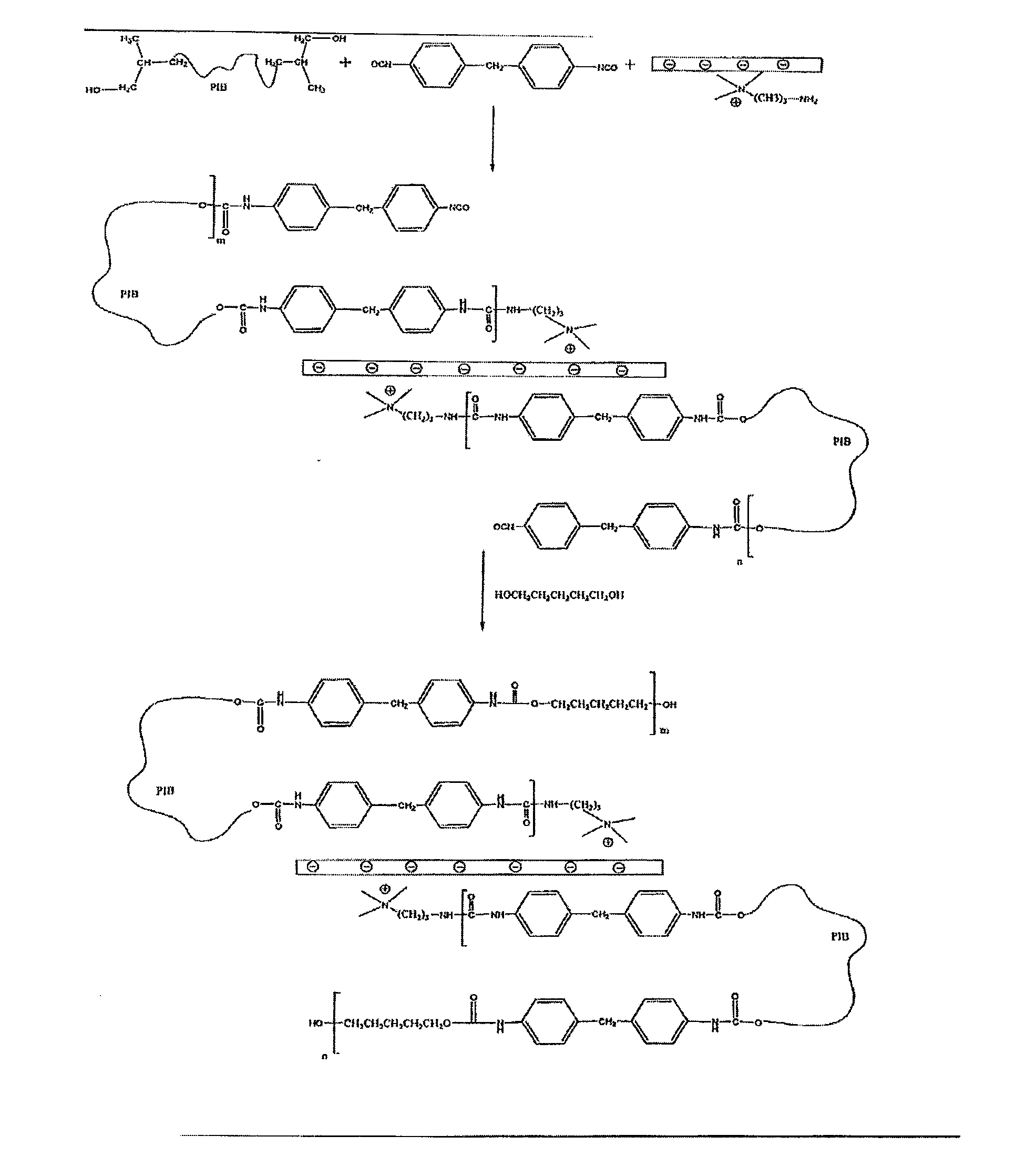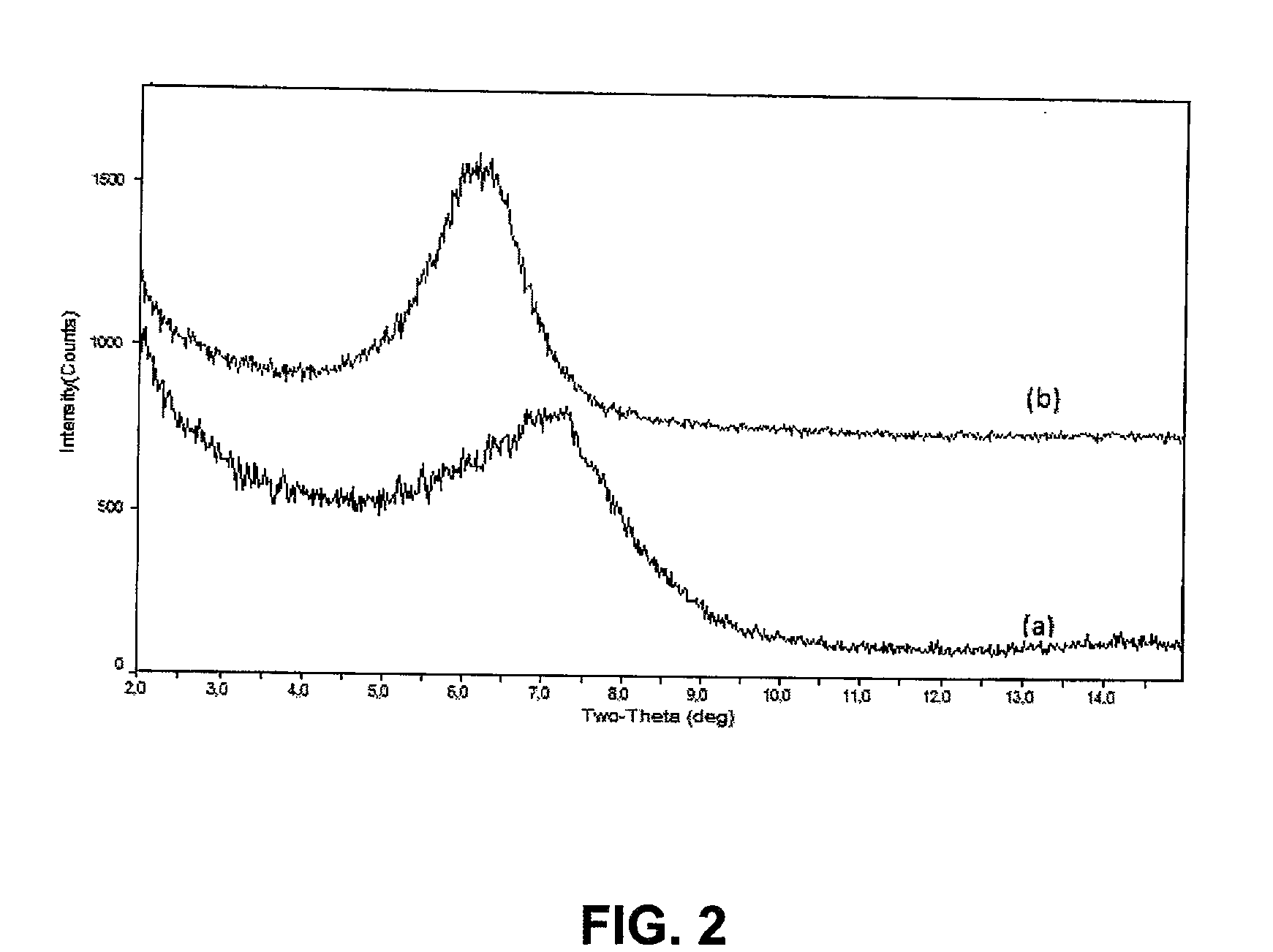Polyisobutylene-based polyurethanes containing organically modified montmorillonite
a technology of organically modified montmorillonite and polyisobutylene, which is applied in the field of polyurethane prepolymers and polyurethanes, can solve the problems of incompatibility between the use of such polymers, the ionic attachment between the modifier and the mmt will diminish, and the proposition is flawed, so as to improve the tensile strength, elongation and/or toughness, and improve mechanical properties
- Summary
- Abstract
- Description
- Claims
- Application Information
AI Technical Summary
Benefits of technology
Problems solved by technology
Method used
Image
Examples
Embodiment Construction
[0032]The present invention generally relates to the production of polyurethanes or polyurethane prepolymers containing very small amounts of organically-modified layered clays, such as organically-modified montmorillonite (OmMMT), to produce optically clear polyurethane films with greatly improved properties relative to those of unadulterated virgin polyurethane. Such polyurethanes are believed to be particularly suited for use in medical devices.
[0033]In one embodiment, polyurethane prepolymers may be made from the reaction product of a diol and a stoichiometric excess of diisocyanate, together with less than 1 weight percent, based upon the total polymer composition, of a layered clay exfoliated with organic quaternary ammonium salts having alkyl substituents, wherein at least one of the alkyl substituents carries an —NH2 group. Any diol known and used in the art for the production of polyurethane may be used. Examples of such diols include PIB-based diols, such as HO-PIB-OH, or ...
PUM
| Property | Measurement | Unit |
|---|---|---|
| weight percent | aaaaa | aaaaa |
| weight percent | aaaaa | aaaaa |
| weight percent | aaaaa | aaaaa |
Abstract
Description
Claims
Application Information
 Login to View More
Login to View More - R&D
- Intellectual Property
- Life Sciences
- Materials
- Tech Scout
- Unparalleled Data Quality
- Higher Quality Content
- 60% Fewer Hallucinations
Browse by: Latest US Patents, China's latest patents, Technical Efficacy Thesaurus, Application Domain, Technology Topic, Popular Technical Reports.
© 2025 PatSnap. All rights reserved.Legal|Privacy policy|Modern Slavery Act Transparency Statement|Sitemap|About US| Contact US: help@patsnap.com



